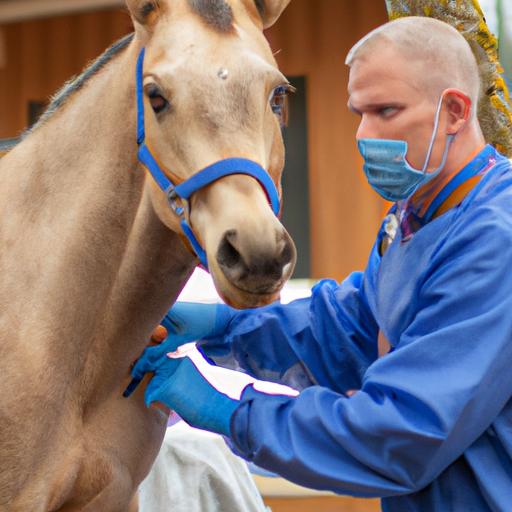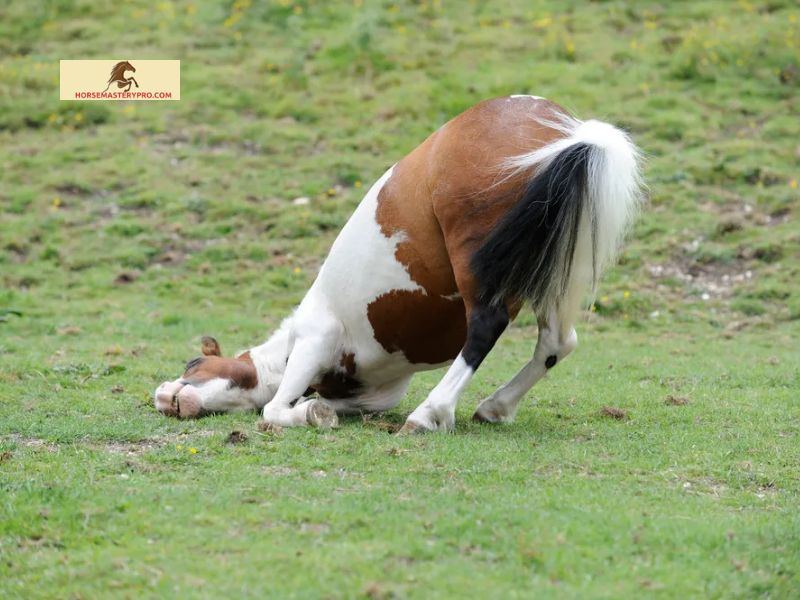Discover effective prevention and treatment methods for swollen sheath in horses. From proper hygiene practices to veterinary care, learn how to ensure your horse’s well-being.
Introduction

When it comes to the well-being of our equine companions, it’s essential to stay informed about potential health issues that may arise. One such concern that horse owners should be aware of is a swollen sheath. But what exactly is a swollen sheath in horses, and why is it crucial to address and treat this condition promptly?
What is a swollen sheath in horses?
A swollen sheath refers to the abnormal enlargement or inflammation of the protective covering that surrounds the penis in male horses or the area surrounding the clitoris in mares. This condition can cause discomfort and lead to various complications if left untreated. As responsible horse owners, we must understand the causes behind swollen sheaths to ensure the well-being of our beloved animals.
Importance of addressing and treating swollen sheaths
Dealing with a swollen sheath is not only about alleviating discomfort for your horse but also about preventing potential health complications. Ignoring this condition can lead to more severe issues, such as infections, discomfort during urination or mating, and even behavioral changes. By addressing and treating swollen sheaths promptly, we can help our horses maintain their overall health and well-being.
Common causes of swollen sheaths in horses
Swollen sheaths can occur due to various factors, and understanding these causes is vital in knowing how to prevent and treat the condition effectively. Some common reasons behind swollen sheaths include the accumulation of smegma, infection or inflammation, allergic reactions, and inadequate hygiene or grooming practices.
Remember, as horse owners, we play a crucial role in the care and maintenance of our equine companions. By delving deeper into the causes and treatments of swollen sheaths, we can ensure a healthy and comfortable life for our horses.
Stay tuned for our next section, where we will explore the anatomy of a horse’s sheath and how it can become swollen.
Understanding the Anatomy of a Horse’s Sheath

Definition and Function of a Horse’s Sheath
To comprehend the complexities of a swollen sheath, we must first grasp the significance of a horse’s sheath itself. The sheath serves as a protective covering for the penis in male horses, or the area surrounding the clitoris in mares. Its primary function is to safeguard the delicate reproductive organs from external elements and potential injuries.
Location and Structure of the Sheath
Located between the horse’s hind legs, the sheath is a pouch-like structure that houses the penis or clitoris. It is positioned slightly forward from the hind legs’ midpoint, where it remains nestled within the folds of skin. The sheath is composed of a combination of soft tissues, including connective tissue, muscles, and blood vessels, which work harmoniously to support its functionality.
How the Sheath Can Become Swollen
Understanding how a sheath can become swollen is crucial for horse owners seeking to prevent or address this issue. One common cause is the accumulation of smegma, a waxy substance that naturally occurs within the sheath. If not regularly cleaned, smegma can build up, leading to inflammation and swelling.
Additionally, infections or inflammation caused by bacteria or fungi can result in a swollen sheath. Allergic reactions to certain substances, such as soaps or insect bites, can also trigger an inflammatory response. Lastly, inadequate hygiene or grooming practices, including infrequent sheath cleaning, can contribute to the development of a swollen sheath.
By comprehending the anatomy of a horse’s sheath and the factors that contribute to swelling, we can better grasp the importance of regular maintenance and promptly address any issues that may arise.
Next up, in Section 3, we will delve into the signs and symptoms of a swollen sheath in horses, helping you identify this condition and take appropriate action.
Signs and Symptoms of a Swollen Sheath in Horses

As responsible horse owners, it’s crucial to be able to recognize the signs and symptoms of a swollen sheath. By being observant and attentive, we can promptly address any potential issues and ensure the well-being of our equine companions. Let’s explore the various indicators and potential complications associated with a swollen sheath.
Visual indicators of a swollen sheath
One of the most apparent signs of a swollen sheath is the visible enlargement of the area surrounding the penis in stallions or the clitoral region in mares. The sheath may appear distended, red, or inflamed. It’s essential to closely monitor any changes in size or appearance, as these can be early indications of a problem.
Behaviors and discomfort associated with a swollen sheath
Horses with swollen sheaths may exhibit discomfort or behavioral changes. They may become irritable, restless, or display signs of discomfort when urinating or during mating. Some horses may even show signs of aggression or resistance while being handled. It’s important to pay attention to these behavioral cues, as they can provide valuable insights into the horse’s well-being.
Potential complications if left untreated
If a swollen sheath is left untreated, it can lead to more severe complications. In some cases, the accumulation of smegma, a waxy substance found in the sheath, can become impacted and cause discomfort. This can also create an ideal environment for bacterial infections, leading to further inflammation and potential pain for the horse. Additionally, untreated swollen sheaths can affect a horse’s reproductive health and overall behavior.
By understanding the visual indicators, behavioral changes, and potential complications associated with a swollen sheath, we can take the necessary steps to address and treat the condition promptly. In the next section, we will explore the common causes of swollen sheaths in horses, providing valuable insights into prevention and treatment strategies.
Common Causes of Swollen Sheaths in Horses
Horses can experience swollen sheaths due to various reasons, and understanding these common causes is crucial in preventing and addressing the condition effectively. Let’s take a closer look at the factors that contribute to swollen sheaths in horses:
A. Accumulation of smegma
One of the primary culprits behind swollen sheaths is the accumulation of smegma. Smegma is a waxy substance secreted by the sheath, and when not regularly cleaned, it can build up over time, leading to irritation and inflammation. Regular sheath cleaning is essential to prevent the excessive accumulation of smegma and subsequent swelling.
B. Infection or inflammation
Infections or inflammation in the sheath area can cause significant swelling. Bacterial or fungal infections can occur if the sheath is not cleaned properly, leading to discomfort and potential complications. Inflammation can also arise from injuries or allergic reactions, further exacerbating the swelling. Regular hygiene practices and prompt veterinary care are essential to address infections or inflammation effectively.
C. Allergic reactions or irritants
Horses, like humans, can be susceptible to allergic reactions or irritants. Certain soaps, shampoos, or grooming products may contain ingredients that can cause an adverse reaction in the sheath area, leading to swelling and discomfort. It’s crucial to be mindful of the products we use and opt for gentle, horse-friendly options to minimize the risk of allergic reactions.
D. Inadequate hygiene or grooming practices
Neglecting proper hygiene and grooming practices can also contribute to swollen sheaths in horses. Regular cleaning of the sheath area is vital to prevent the accumulation of smegma, remove irritants, and identify any potential issues early on. Inadequate hygiene or infrequent grooming can result in discomfort, infections, and other complications.
By understanding these common causes of swollen sheaths in horses, we can take proactive measures to prevent this condition and ensure the well-being of our equine companions. In the next section, we will explore the prevention and treatment options available for swollen sheaths in horses.
Conclusion
In conclusion, addressing and treating swollen sheaths in horses is of utmost importance for their overall health and well-being. By understanding what a swollen sheath is and the common causes behind it, we can take proactive measures to prevent this condition from occurring in our equine companions.
Regular cleaning and hygiene practices play a vital role in preventing swollen sheaths. By prioritizing sheath cleaning as part of our horse care routine, we can minimize the risk of smegma buildup and potential infections. It is essential to recognize the significance of sheath cleaning and not overlook this crucial aspect of horse grooming.
When it comes to safely cleaning a horse’s sheath, following proper procedures is essential. Gently cleaning the sheath area with warm water and mild, equine-safe cleansers can help maintain cleanliness without causing any discomfort to the horse. If you are unsure about the process, consulting with a veterinarian or an experienced equine professional can provide valuable guidance.
In some cases, veterinary care and treatment options may be necessary to address more severe or persistent swollen sheaths. A veterinarian can provide expert advice, conduct necessary examinations, and recommend appropriate treatment options tailored to your horse’s specific needs.
Furthermore, making potential dietary and lifestyle adjustments can also contribute to preventing swollen sheaths. Ensuring a well-balanced diet and maintaining a clean and hygienic living environment for your horse can minimize the risk of developing this condition.
At horsemasterypro.com, we emphasize the importance of early detection and treatment of swollen sheaths. By implementing regular sheath cleaning and maintenance practices, we can ensure the comfort and well-being of our beloved horses. Let’s prioritize their health and strive to provide them with the best care possible.
Thank you for joining us on this informative journey. Stay tuned for more valuable insights and tips on horse care and management at horsemasterypro.com.


